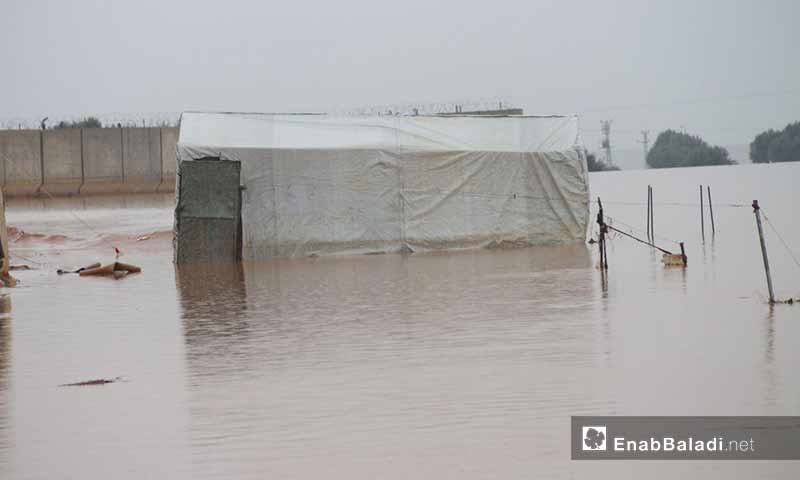



In winter 2019, the camps of internally displaced persons (IDPs) in northern Syria witnessed several disasters due to heavy rain and torrents that lasted for numerous weeks and led to the submerge of thousands of tents and damage of properties, as well as the death and illness of IDPs, who experienced a harsh and cold winter, where the disappearance of heating materials was prevalent in most camps. This brutal winter was followed by a blazing hot summer that hit the southern regions of Idlib and northern Hama during a military campaign launched by the Assad and Russian forces that triggered a new wave of displacement and created new needs for thousands of people.
Since February 2019 up to July, the Response Coordinators team (RC) has documented that more than 93,274 families (606,272 persons) were displaced, spreading in the Euphrates Shield and Olive Branch areas, as far as the northwestern regions of Syria. This was the result of the military operations in the northern and western Hama villages and the southern countryside of Idlib.
This displacement has changed the priorities of the organizations operating in the region, for their ultimate goal is to respond to thousands of civilians in the northern areas of Idlib, which is relatively far from the targeted areas. Other organizations, however, are working on various projects in preparation for the coming winter.
One of these projects, launched by Social Development International and Human Support (SDI), aims to restore and rehabilitate partially damaged houses in northern Syria. The title of the project is Winter Emergency Response Shelters for the Most Vulnerable People; Men, Women, Boys and Girls in Bdamah, Jisr al-Shughur and Khan al-Asal.
Mohamed al-Hallaj, RC director, indicates that funds for the Winter Response project are raised through money received from donor countries or individuals and other contributions, in addition to the support coming from the United Nations (UN) or the Office for the Coordination of Humanitarian Affairs (OCHA).
Al-Hallaj added telling Enab Baladi reporter that the disaster response currently is based on providing shelter and food for displaced people and these services will last till UNDP announces next winter’s response funding.
In regard to the founding mechanisms of Winter Response, Al-Hallaj explains that the organizations are raising the regions’ needs assessment to the UN, both in terms of food security, shelter, and other basic necessities. Then, the approvals for disbursement of these grants to the beneficiaries of the target areas would come.
The Winter Response project will be launched as soon as the UN Trust Fund announces the allocated funds of each country, and when the organizations identify their needs, whether buying tents or renovating and consolidating the camps, according to Hallaj.
On June 30, the UN launched a global campaign in cooperation with Twitter to support internally displaced people in Syria, Iraq and refugees around the world by early July 2019.
The campaign, the first joint venture with a social networking site, aims to raise funds in order to alleviate the suffering of refugees and displaced people in tents during the winter.
The campaign, called “KnitForRefugees”, aims to provide winter relief aid proactively and protect the displaced from the dangers of winter such as harsh cold weather and storms. The success of the campaign depends on numbers of retweets on Twitter, as a global platform popular among politicians, jurists and the media.
The campaign is due to end on November 30, 2019 and the total amount raised will be announced during the first World Refugee Forum, held at the end of this year in Geneva.
In December 2018, the RC team issued a statement in which it noted that more than 6,500 families were displaced and about 550 tents were damaged, 220 of which were completely washed away in Atma, Omar, Anfal, Sabrin, and Louis Camps, Sarakib Camps, Ma’arat al-Nu’man Camps, and other random (unnamed) camps.
UN Secretary-General Spokesman Stephan Dugrick during a press conference on Wednesday, January 9th, said that in general, floods have badly affected around 23,000 displaced people during the 2019 winter and destroyed more than 3,000 temporary shelters.
if you think the article contain wrong information or you have additional details Send Correction